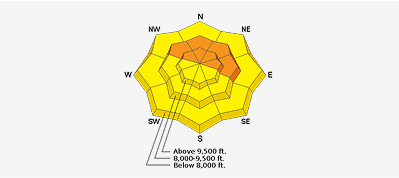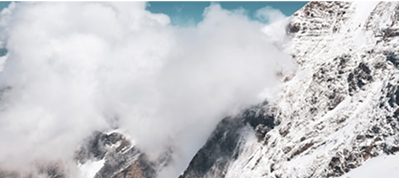Despite upwards of 0.7" of water weight in upper LCC, as well as some fresh wind drifting, the Saturday storm does not seem to be enough to affect deeper buried layers. The new snow/old snow interface is the weakest snow with a poor bond between the layer of near-surface facets that formed on top of the old snow surface (this formed during the period of high pressure from 12/26 - 1/5) and the small (5-10 cm/2-4") storm slab of denser snow that fell on Saturday.
There was also a period of wind Saturday and into Sunday morning, creating some denser drifts.
The photo below is one such fresh wind pocket I found on an east aspect at 10,000'

While out on Saturday in the Brighton backcountry with UAC colleagues Andrew Nassetta and Craig Gordon, we were getting the cracking and propagation of shallow storm slabs (~5 cms) failing at this interface. The slab was denser snow, but so shallow it was generally harmless. However, it was a clear indication the layer of facets on top of the old snow surface was preserved, and it may become a very active weak layer with more snow anticipated about midweek.
Still getting some cracking on Sunday morning, but for the most part could only get activity where there had been some wind-drifting creating a denser and thicker slab.
The video below is my partner Mark Johnston demonstrating a shovel tilt test. This is a useful technique for testing the interface of the old snow surface with new snow and/or wind. As can be clearly seen, very easy to get clean shears at the interface. While not that much a concern for now, it may become reactive with additional loading.






